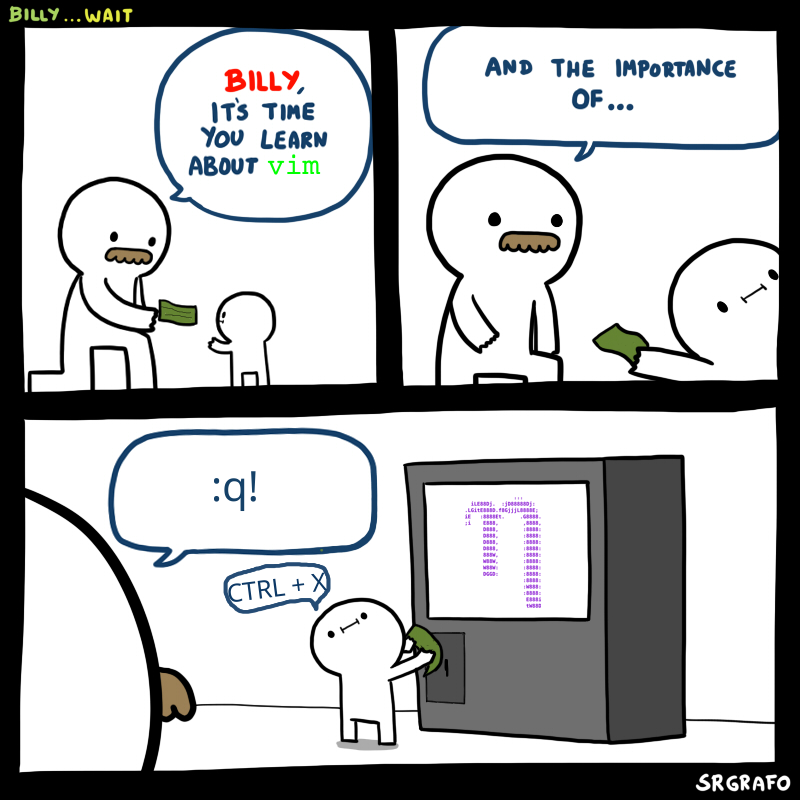David From Space
I’m David. I live in Tacoma, Washington. I do square foot gardening, home automation with Home Assistant, and have too many cats.
You think you saw me behind some ferns? You just might have!
- 0 Posts
- 49 Comments

 22·1 month ago
22·1 month agoSurely this one last permutation…

 1·1 month ago
1·1 month agoI will check out Polonium! Thanks!

 3·1 month ago
3·1 month agoI know you said Gnome, but if you are willing to look at Plasma, I’ve just started using Bismuth on KDE Plasma and I think it can do at least a chunk of that. It can set particular sizes with Window Rules, it looks to have a quite robust shortcut system, including resizing windows, swapping, rotating, or changing layouts. As for the focus vs open, KRunner lets you choose the active application when you type it’s name. There’s also this: https://github.com/academo/ww-run-raise but I have not used it and cannot vouch for that.

 8·1 month ago
8·1 month agoDon’t worry, if the bridge breaks there are two backup bridges conveniently located close by!
Alligators steal hats all the time?

 82·3 months ago
82·3 months agoWhat are you doing with your machine that would be confusing for your standard end user? KDE out of the box is good enough for my daily driving. PopOS, Bazzite, and Mint work great. GUI options for most normal computing things you’d do these days. The amount of customization allowed on an end user’s machine is often minimal anyway. Plus, you sorta imply that the end user would be doing all this, instead of an IT admin preconfiguring a machine with Ansible or a custom install script. I think you may be over estimating what your typical business user does. It’s mostly “Here’s my chat, here’s my browser, here’s my 1-5 LOB apps, here’s my printer. Can I change my background to my kids? Great.”

 8·3 months ago
8·3 months agoBetween cloud apps and RemoteApp technology, there is a pretty decent chance for Linux desktops with Windows servers becoming the norm, again, for smaller size businesses. Organizations I work with still use thin clients, which - what’s the difference? And based on end user reactions to the UI when upgrading to Windows 11 - all change is hard. They’d get used to it fast. Especially if it acts mostly like Windows 10.

 2·3 months ago
2·3 months agoI would tell you to fight me, but I guess I need to add an
GTK_USE_PORTAL=1argument to my KDE Konflict Picker first…

 13·4 months ago
13·4 months agoTom Goa’uld
…coho on the blowho’?
…I got nothing…

 13·5 months ago
13·5 months agoThere are a couple ‘Other - Please Specify’ fields I definitely filled out with ‘Do not do AI’.

 30·5 months ago
30·5 months agoAh, this looks like it’s a snap to use.

 21·5 months ago
21·5 months agoSupply chains are literally chains of suppliers, e.g. vendors. Your ‘simplest electronic product’ could absolutely be constrained by whom you choose to work with.
If your vendor locks you into buying from a certain source, and their vendor requires the same, and so on up the chain, how would you describe that dynamic to differentiate from a single vendor being the point of restriction?
To your point that the phrase didn’t exist, here are three supply-chain oriented papers that directly reference the phrase: This paper is exploring the social dynamics of buyers and sellers:
Lock-in situations in supply chains: A social exchange theoretic study of sourcing arrangements
Specifically, we believe that the examination of lock-in situations between a manufacturer and its supplier, i.e., instances where for all intent and purposes, one party is heavily dependent upon the other party, with few alternatives, under social exchange theory, can provide new insights into controlled self-interest behaviors (e.g., strategies) in on-going supply chain relationships.
This paper is about supply chains in plastic management, but the phrase is here:
Business models and sustainable plastic management: A systematic review of the literature
Barriers frequently mentioned were high costs, complexity of new systems, supply chain lock-in and low customer buy-in.
And here’s a paper about optimizing your supply chain where it is referenced as something to avoid:
Orchestrating cradle-to-cradle innovation across the value chain
This one even has a handy definition:
Supply chain lock-in: Contracts and strong dependencies with suppliers not supporting circularity (e.g., either due to non-willingness or lock-in in production facilities optimized for linear concepts).I suppose if you would like to be super extra pendantic Wikipedia does have you covered with “Collective Monopolistic Vendor Lock-in”.

 11·5 months ago
11·5 months agoTry another search engine: https://xo.wtf/search?q=what+is+supply-chain+lock-in

 262·5 months ago
262·5 months agounrepentant nano gang rise up


 3·5 months ago
3·5 months agoI’ve passed through my GPU for acceleration purposes which has worked pretty well. I don’t see a passed-through GPU in your screenshot. I’ll assume you turned on the correct IOMMU and SR-IOV settings, added the PCI:E hardware to that VM, and made sure it showed up inside the guest OS?

 11·5 months ago
11·5 months agoPumpkins Georg, who lives in spooky bog & disposes of over 15 million pumpkins every day, is an outlier and should not have been counted.
kale is a delicious vegetable
(˶ᵔ ᵕ ᵔ˶)
KALE DOESN’T EXIST IT’S CABBAGE ALL THE WAY DOWN
( •̀ - •́ )
AND NEITHER DO VEGETABLES
(╯°□°)╯︵ ┻━┻
Perhaps the ICP should appeal more to the everyday layperson…a gender neutral term coined in 1972, just seventeen years before the unrelated 1989 release of Belgian techno anthem, Pump Up the Jam.